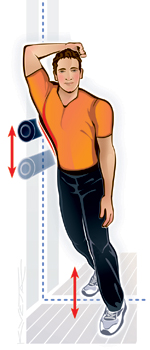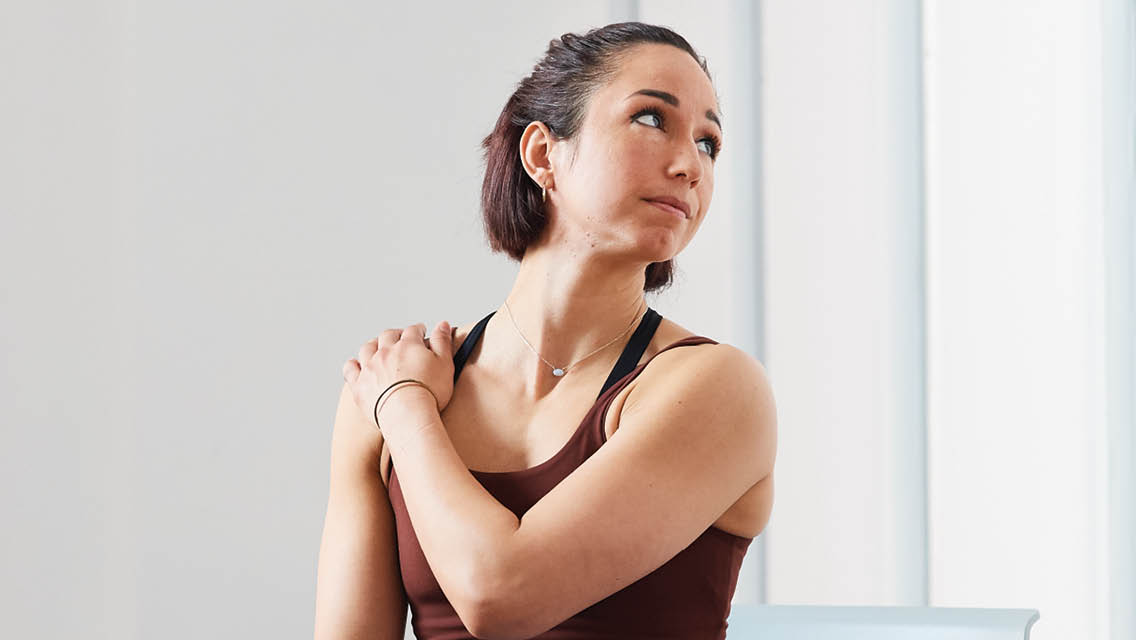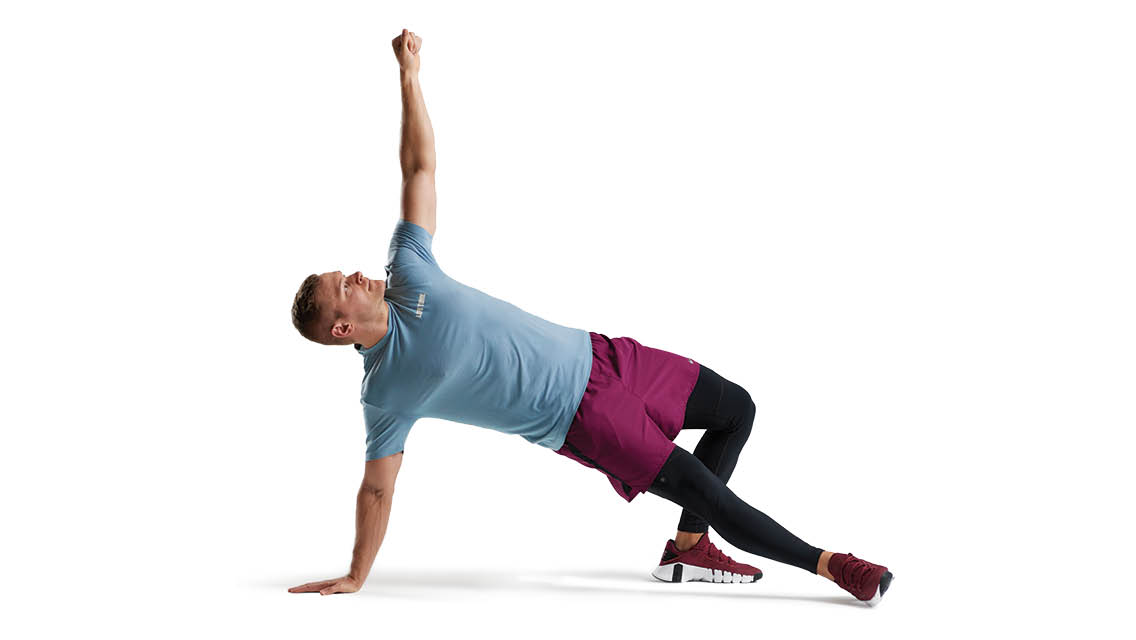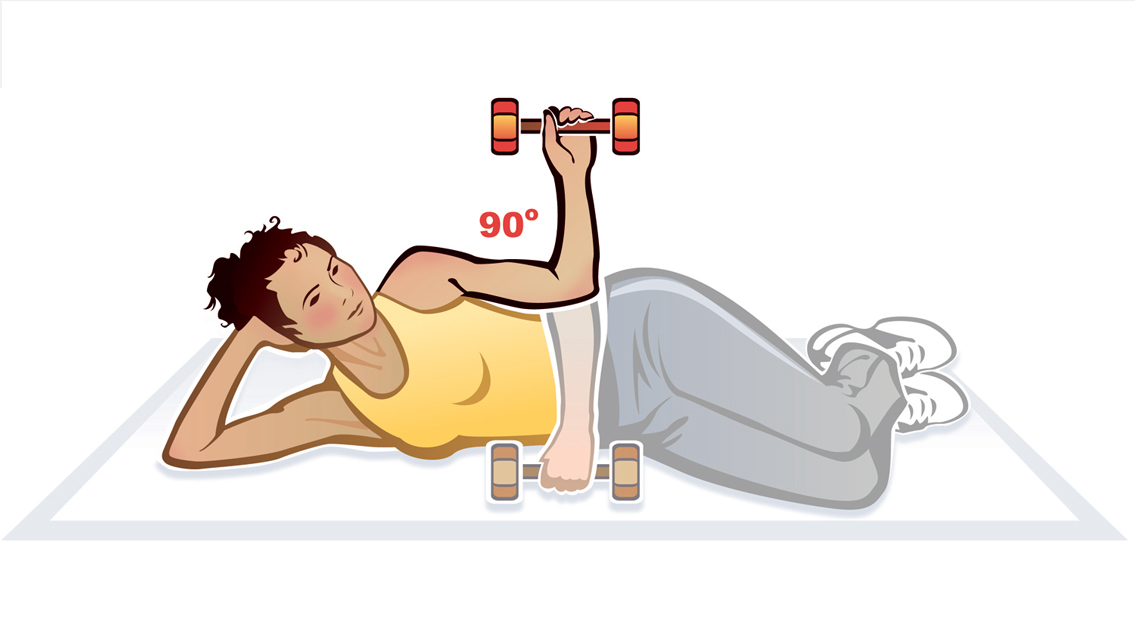The latissimus dorsi, which start at the back of each armpit and attach to several points in your lumbar and thoracic spine, are the largest muscles in the upper body. They produce the internal rotation, adduction and extension of the arms necessary for pulling movements during swimming, throwing, rowing, chopping and climbing. They’re also key stabilizers of the torso because of how they attach to the spine (whenever you carry a heavy load, the lats are involved). Finally, they assist in properly positioning your shoulder blades — important for shoulder mechanics.
“Because the lats serve so many functions, they’re prone to tightness, and when the lats become tight, that can lead to pain in the shoulders, neck and lower back,” says Michael Stare, PT, CSCS, founder of Spectrum Fitness Consulting in Beverly, Mass. To prevent lat problems, focus on full range of motion during training, and make sure your abs, hip flexors and shoulders are strong.
Test Your Lat Length
• Stand tall with your spine in a neutral position and tense your abdominals.
• Keeping your palms facing each other, raise your arms forward and upward as far as you can without arching your back or shrugging your shoulders.
• If you can’t get your arms perpendicular to the ground (up by your ears) without jutting your head forward, your lats are probably locked up.
Standing Lat
Stare recommends foam rolling daily (or even a couple of times a day) for two to three minutes each side. “Follow this exercise by moving your arms through full range of motion to groove proper movement patterns while you’re still loose,” says Stare. “Most people notice results immediately.”
 • Standing with your right side facing a wall, raise your right arm over your head, resting your forearm on your head to relax your arm.
• Standing with your right side facing a wall, raise your right arm over your head, resting your forearm on your head to relax your arm.
• With the opposite hand, place the foam roller against the wall several inches below your armpit and lean against the roller with your right lats.
• Stagger your legs to allow your body to ascend and descend, so you can address most of the length of your lats. Position your legs farther away from the wall to place more weight against the roll to increase pressure or closer to decrease pressure.
• Target an area of only a few inches at a time. Most people should focus on the area from the armpit to the middle of the ribcage: This is where the bulk of the muscle is and tends to be the source of most tenderness.
• If you’re very muscular and require more pressure, try this while lying on your side with the foam roller on the floor under you.




This Post Has 0 Comments